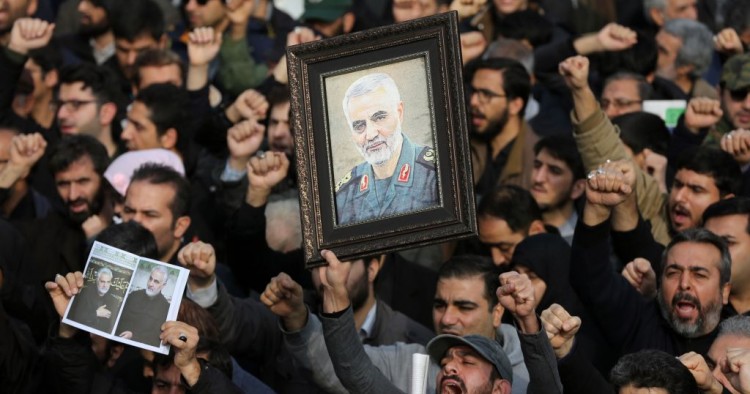The Trump administration’s decision to assassinate Iran’s Gen. Qassem Soleimani, head of the Revolutionary Guards Quds Force, is a turning point in U.S.-Iran relations. That said, it is not necessarily a prelude to war. The immediate reaction in Iran — from Supreme Leader Ali Khamenei to the top commanders of the Revolutionary Guards — has been to vow revenge.
But while the pressure in Tehran to retaliate will be considerable, if for no reason other than to save face and prevent despair in the ranks of the regime, the Iranian Islamist system is hardly suicidal. No one in Tehran can now afford to test the limits of Donald Trump’s unpredictability. He is the man who for years lamented American interventions in the Middle East only to shock the Iranians by killing the leading symbol of Iran’s regional agenda.
Put simply, Khamenei and the rest of the regime now have to reexamine all their earlier calculations about Trump and this American administration’s willingness for a full-out war. Tehran has three main options. It can lash out at the U.S. and all things American in the Middle East and beyond — from targeting U.S. officials to firing off missiles at U.S. bases in the region. The U.S. government’s call that all Americans immediately leave Iraq shows that Washington sees this as a possible scenario in certain areas.
Second, the regime in Tehran can take its time and consider its countermove while it exploits Soleimani’s assassination to shore up nationalist fervor at home. The desperately unpopular Islamic Republic needs any injection of legitimacy it can secure and will do its utmost to continue to portray Soleimani as a hero who defended the Iranian nation.
This takes us to third option, which is a broader reassessment of whether Iran can sustain its ideological course, which it calls the “Axis of Resistance.” Soleimani was the embodiment of Tehran’s 40-year quest to export its version of militant Islam to nearby countries. This quest began in 1979 when Ayatollah Ruhollah Khomeini took control of Iran. Opportunities for Iran to intervene in Iraq after 2003 and in Syria, Yemen, and elsewhere after 2011, which the likes of Soleimani called “Forward Defense,” merely supercharged an effort already in motion by Tehran to reshape the Middle East.
This Iranian approach continued, with Soleimani as the spearhead, but now the pushback is bound to raise tough questions in Tehran. Not only is the Iranian population overwhelmingly against the regime’s militant foreign policy, but recent anti-Iran protests in Iraq underline the limitations of the “Axis of Resistance” project. The fact that Soleimani was not killed on Iranian soil but in Baghdad makes him less of an Iranian hero and more of a militant Islamist who put his ideology ahead of his country’s interests.
That is at least a common and profound sentiment among Iranians inside and outside of the country. Meanwhile, it is for Khamenei and his cohorts in the Revolutionary Guards to decide whether they are confident enough that significant escalation against the Trump administration is something they can pull off given pressures at home and abroad for Tehran to change course.
Alex Vatanka is a Senior Fellow at MEI who specializes in Middle Eastern regional security affairs with a particular focus on Iran.
Photo by Fatemeh Bahrami/Anadolu Agency via Getty Images
The Middle East Institute (MEI) is an independent, non-partisan, non-for-profit, educational organization. It does not engage in advocacy and its scholars’ opinions are their own. MEI welcomes financial donations, but retains sole editorial control over its work and its publications reflect only the authors’ views. For a listing of MEI donors, please click here.













